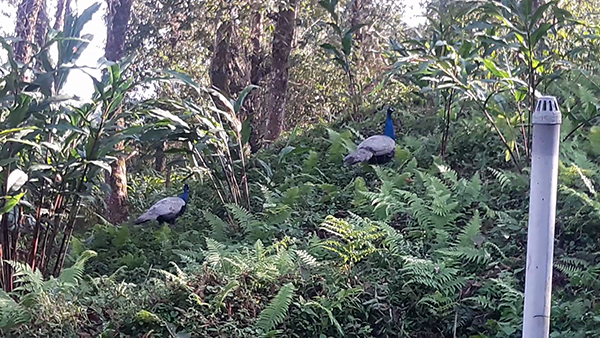 The peafowl usually sighted at lower altitude in southern parts of the country have been spotted in Dophuchen Gewog of Samtse. The Gewog is located at about 2,200 metres above sea level.
The peafowl usually sighted at lower altitude in southern parts of the country have been spotted in Dophuchen Gewog of Samtse. The Gewog is located at about 2,200 metres above sea level.
The people there say it has been about two years since they first spotted the bird in their village. Lately, two wild peahens are spotted in Dophuchen Gewog.
“We feed the birds whenever we see them. The two peahens wander from place to place, these birds are usually found in hot places,” Tika, one of the villagers, said.
“It is surprising to see peafowl in our area. Usually, we have seen peacocks only at Dhamdum area. It might be because our place has become warmer compared to the past,” Pradeep, another villager, said.
 Most of the residents there believe that sighting of peacocks or peahens in their area is a sign of good luck and their village will be blessed with a bountiful harvest.
Most of the residents there believe that sighting of peacocks or peahens in their area is a sign of good luck and their village will be blessed with a bountiful harvest.
Meanwhile, the forestry officials in the dungkhag are studying the cause for the bird’s migration.
“Peacocks and peahens usually survive in hot places but I don’t know how they migrated here. It might be because global warming or destruction to their habitat,” Tshering Norbu, the Range Officer of Dophuchen said.
“The other possible reason could be due to paddy harvest season. The birds are seen feeding on the paddy and also the place is peaceful here.”
The peafowl include three species of birds. The two Asiatic species are the blue or Indian peafowl and the green peafowl of Southeast Asia. The other one is the African species, the Congo peafowl.







